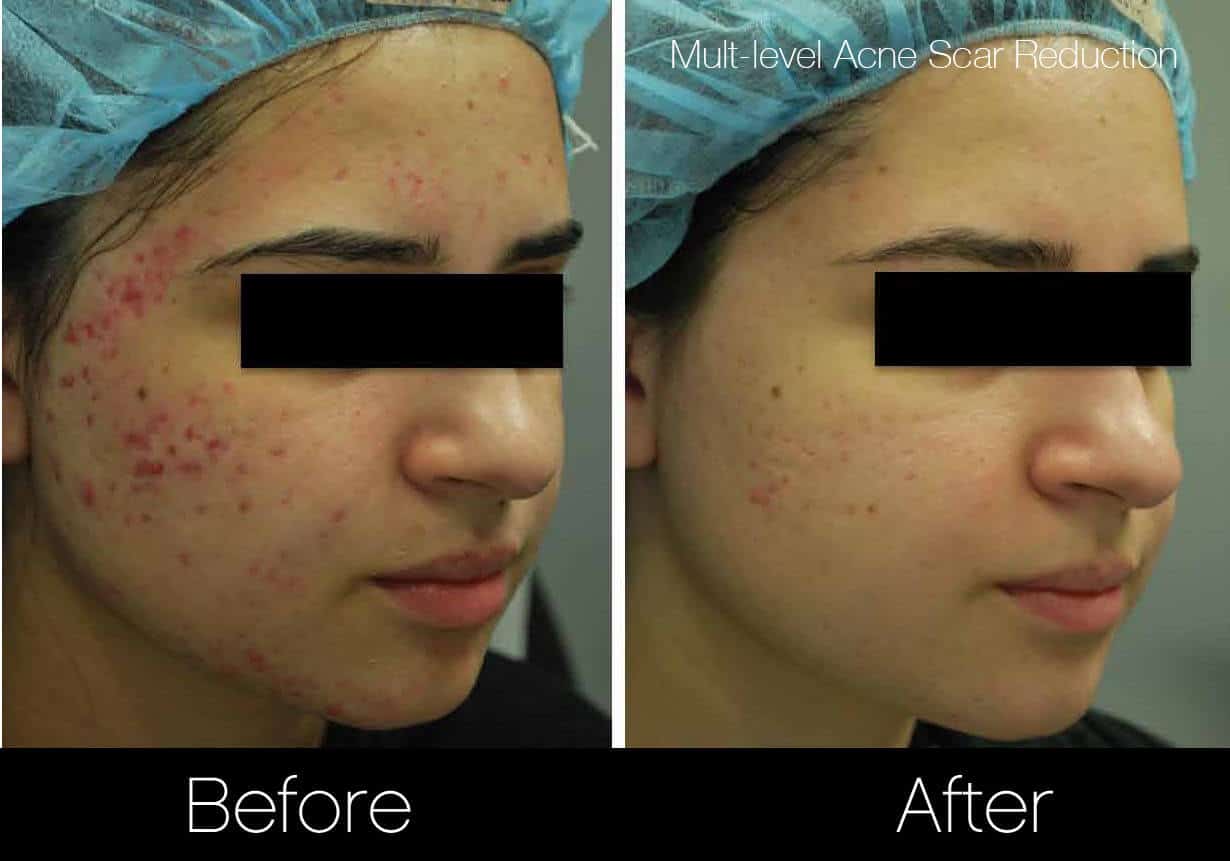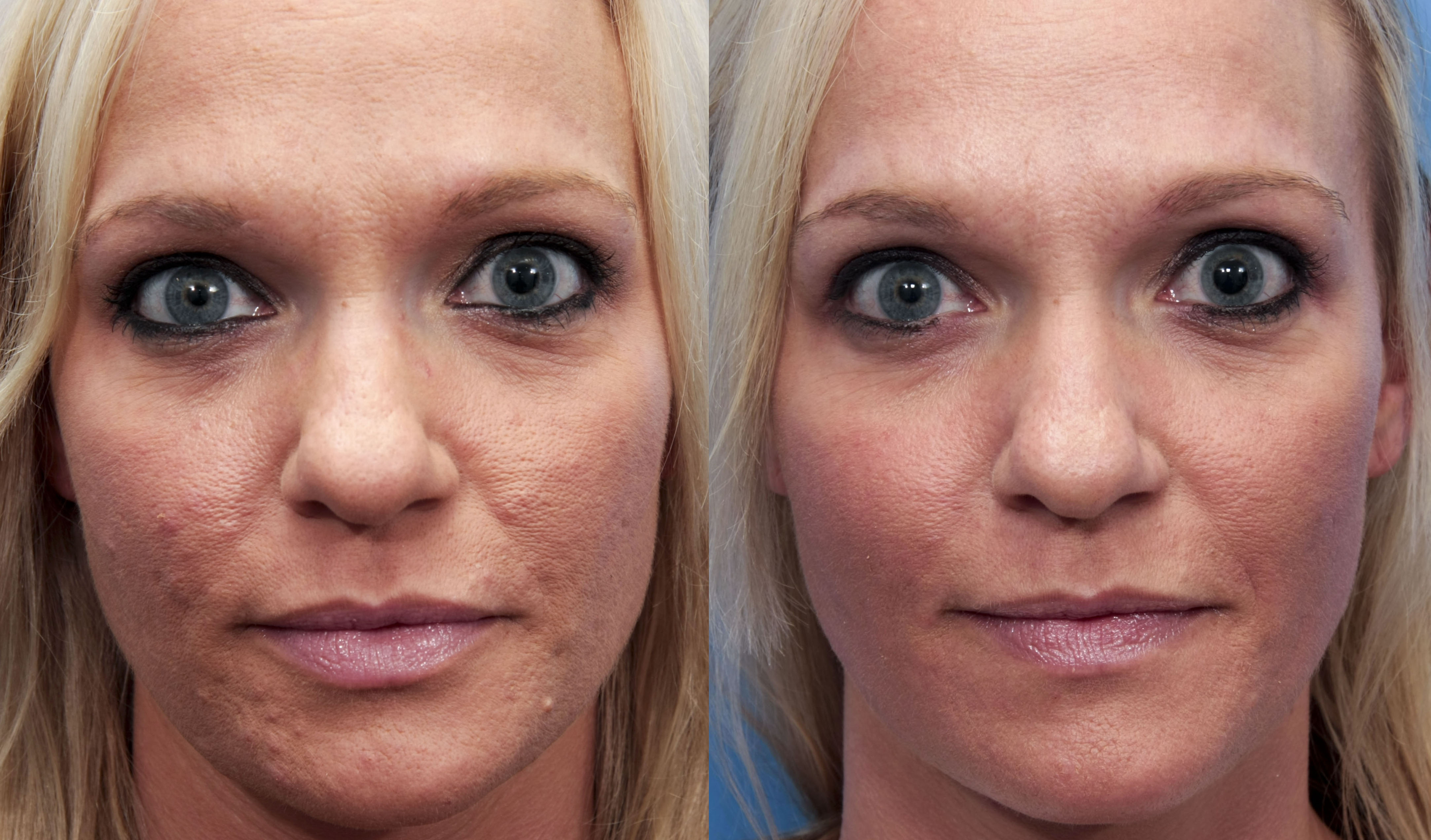Specialist Acne and Acne Scars Treatment: Resilient Results for Clearer Skin
Comprehending the Numerous Skin Disease and Efficient Treatment Choices for Acne Marks
Acne scars stand for an intricate interplay of skin problems that significantly influence individuals' self-confidence and general skin health. As we check out the landscape of acne mark management, it becomes obvious that the trip towards more clear skin might involve more than just topical solutions.
Kinds Of Acne Scars
Acne marks can materialize in different kinds, each calling for certain treatment methods. Both main groups of acne scars are atrophic and hypertrophic marks. Atrophic marks are characterized by a loss of tissue, causing clinically depressed locations on the skin. These marks are additional categorized right into 3 subtypes: ice pick marks, which are narrow and deep; boxcar marks, which are larger and have well-defined edges; and rolling scars, which develop a wave-like appearance due to uneven skin texture.
On the other hand, hypertrophic marks result from an overflow of collagen during the recovery process, causing increased areas on the skin. These scars are usually strong and can vary in color, occasionally appearing red or darker than the surrounding skin.

Root Causes Of Acne Scarring
Marking takes place as a result of the body's all-natural recovery action to inflammation and injury triggered by acne sores. When acne types, it causes an inflammatory feedback, causing the release of various cytokines and development variables that promote healing. This procedure can in some cases lead to extreme cells development or inadequate repair service, resulting in marks.
The key sources of acne scarring consist of the intensity of the acne itself, duration of the sores, and individual skin types. Serious inflammatory acne, such as cysts and nodules, is more probable to lead to scarring due to much deeper tissue damage. In addition, inappropriate handling of acne lesions, such as squeezing or picking, can intensify tissue injury and swelling, raising the probability of scarring.
Hereditary predisposition likewise plays a significant function; people with a family history of scarring go to a greater risk. Skin type and color can influence mark development, as darker skin tones might experience post-inflammatory hyperpigmentation, while lighter skin may establish atrophic scars.

Therapy Alternatives for Scarring
Reliable therapy alternatives for acne scarring differ relying on the kind and extent of the marks. Normally classified into atrophic, hypertrophic, and keloid scars, these conditions call for customized strategies for optimum outcomes.
For atrophic marks, which are defined by a loss of tissue, treatments such as chemical peels, microdermabrasion, and laser treatment are generally used. These techniques advertise skin revival and promote collagen production, thus improving skin texture. Subcision, a minimally intrusive treatment, can likewise be effective by breaking up coarse bands underneath the skin.
Keloid and hypertrophic scars can be much more challenging to deal with. Choices include corticosteroid shots to minimize inflammation and flatten the marks. acne and acne scars treatment. In many cases, cryotherapy or laser treatment might be suggested to reduce their look
Surgical alternatives are offered for extreme scarring, where excision or skin grafting might be required. It's essential for people to seek advice from a dermatologist to examine their certain scar kind and talk look these up about the most appropriate treatment strategy. Combining multiple therapies usually produces the very best outcomes, guaranteeing that each client's distinct skin problem is resolved properly.
Natural Remedy and Natural Solutions
All-natural services and home treatments can supply an obtainable technique for people seeking to enhance the look of acne marks. Different components discovered in the home kitchen area have shown potential advantages in boosting skin texture and advertising recovery.
One popular treatment is aloe vera, recognized for its soothing and anti-inflammatory residential properties. Applying fresh aloe vera gel straight onto the scars can aid enhance skin hydration and reduce inflammation. In a similar way, honey possesses all-natural anti-bacterial and moisturizing top qualities that can assist in scar healing. It can be used as a mask, left on for 30 mins prior to washing off.
An additional reliable option is lemon juice, which works as an all-natural exfoliant and can lighten hyperpigmentation. It should be made use of meticulously, as it might have a peek at this website create photosensitivity. Oat meal masks are likewise useful; their gentle exfoliation can help remove dead skin cells while soothing irritability.
Essential oils, such as tea tree oil and lavender oil, can further sustain mark healing due to their antimicrobial homes. It is important to carry out a spot examination before applying any kind of treatment to make sure there are no unfavorable reactions. These all-natural options can be a complementary approach in the trip to decrease acne marks.
Stopping Future Scarring
Taking on a positive strategy to skincare can dramatically reduce the danger of developing future acne scars. Normal cleansing, exfoliation, and hydration can aid maintain skin health and protect against clogged up pores.
In addition, avoiding the lure to pick or squeeze acne sores is vital, as this can cause swelling and subsequent scarring. Rather, people must concentrate on applying topical therapies that promote recovery and reduce inflammation. Active ingredients such as salicylic acid, benzoyl peroxide, and retinoids are known for their effectiveness in handling acne and decreasing scars.

Finally, keeping a healthy diet plan abundant in anti-oxidants and staying moisturized assistances skin regrowth. By implementing these safety nets, people can considerably reduce their danger of future scarring and advertise total skin health.
Conclusion
To conclude, a detailed understanding of acne marks, incorporating both atrophic and hypertrophic types, is vital for efficient therapy approaches. Customized treatments, consisting of specialist therapies and natural remedy, can significantly improve skin appearance and texture. Preventive measures likewise play a critical duty in decreasing future scarring. Appointment with check my source a skin doctor continues to be important to develop customized methods that consider individual skin kinds and mark intensity, eventually boosting the effectiveness of scar management techniques.
Acne marks represent an intricate interplay of skin problems that considerably impact people' self-esteem and general skin health. The 2 primary groups of acne scars are hypertrophic and atrophic scars. These marks are further categorized into three subtypes: ice choice marks, which are narrow and deep; boxcar scars, which are larger and have well-defined edges; and rolling scars, which develop a wave-like appearance due to uneven skin appearance.
An extensive consultation with a skin doctor can aid figure out the most appropriate treatment, taking into account the person's skin type, mark intensity, and overall skin health and wellness.
Consultation with a skin specialist continues to be vital to devise customized strategies that consider private skin kinds and mark severity, eventually improving the efficiency of scar management methods.